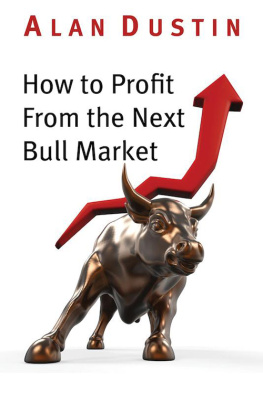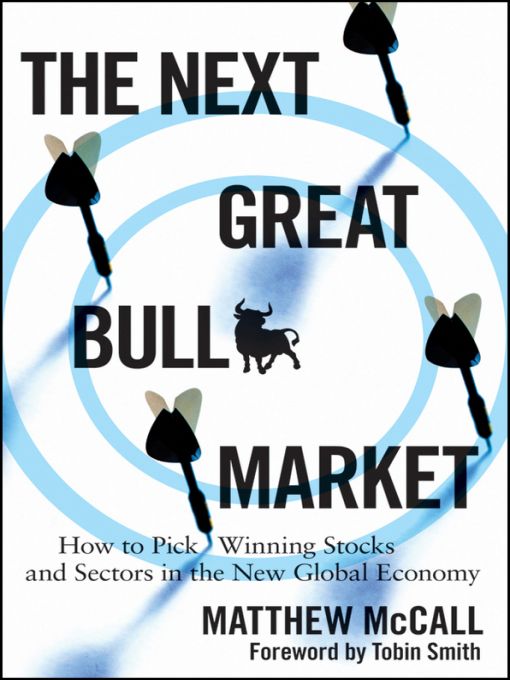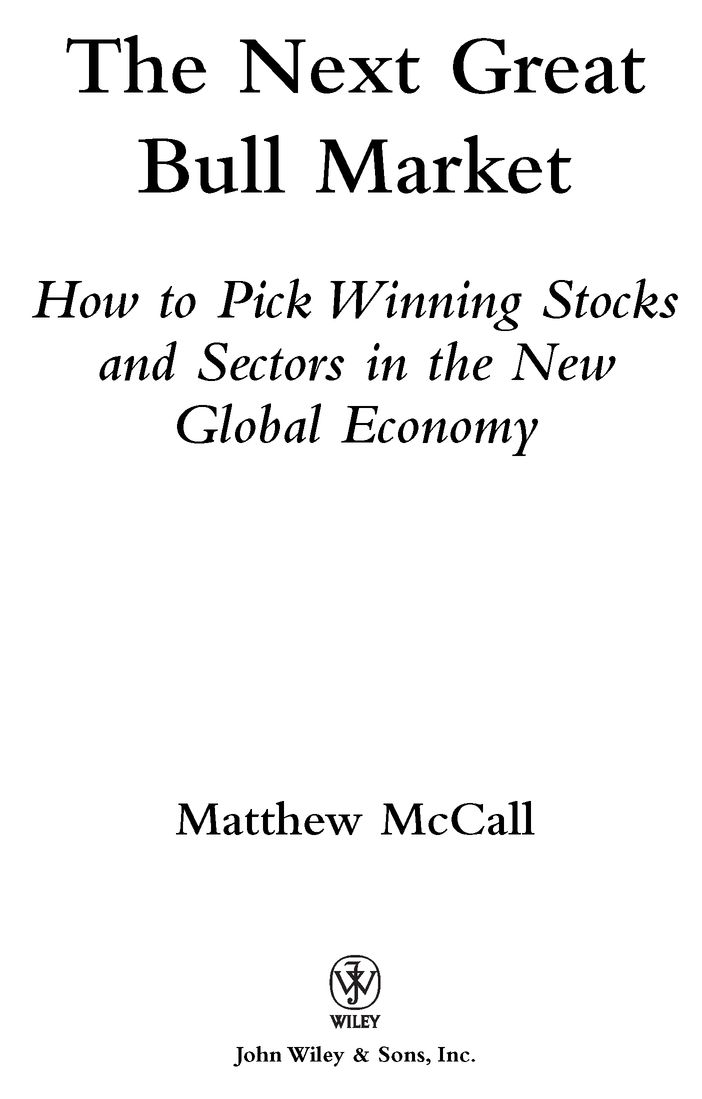Table of Contents
I wish to dedicate this book to my late friend Adam Horvath, who lost his battle with cancer in 2009. Adam will always be in my heart and in the hearts of many. I can only wish that this book will touch and encourage people as much as Adam did during his 33 years in this world.
Foreword
As I type this riding high in the friendly skies in late July 2009, the S&P 500 stands at around 994.
It stood at 954 in late July 1997.
40 index points in 12 years.Whoopee.
Sounds pretty dismal, doesnt it? Those of you who believed you were playing the game right:You know buying and holding stocks for the long term did not grow your financial wealth for more than a decade. Many hold retirement plans and 401(k)s down 30-50 over 60 percent from the original value of securities purchased.
So Matts book hereThe Next Great Bull Marketsounds a wee bit audacious, no?
If you judge the world from the perspective that investing in stocks means investing in U.S.-traded securities only, you may have a point.
But... if you have arrived at the conclusion, as Matt has, that investing in the post-2008/2009 crash means investing in the worlds biggest and most powerful commercial and industrial transformationswhat we like to call Change Waves at my research firm ChangeWave Researchthen you indeed should be expecting to benefit greatly from the Next Great Bull Market.
How on earth can one make such a statement?
Because while the developed worldthe United States, Europe, Australia, and Canadawere imploding under a wall of incredibly bad investments in incredibly overvalued mortgage and debt securities that existed under the rubric of sub-prime mortgages and collateralized debt obligations et al.there was some pretty amazing stuff going on in the emerging economies of the rest of the world.
Hundreds of millions of citizens were lifted out of one dollar-a-day poverty. Hundreds of millionsin China, in India, in Brazil, in other Asian countrieseven old-line Communists in Russia.
Put together into a cohort of new middle class, an entire new civilization was born to the world while our economy on steroids boomed and then historically crapped out.
Five hundred million-plus new middle class consumers now have the same dream our parents had and fought fora sustainably prosperous life for themselves and their children. Hundreds of millions of people all over the world wake up every day dedicated to getting real roofs over their heads, real education for their children, some extra cash to travel and see the world, watch high-definition TVs, and soon have family cars.
Imagine 500 million people moving from 1950s-style America or post-war Europe to the twenty-first centuryand skipping the 1980s and 90s!
In sheer numbers the ascension of the New World Middle Class has the greatest impact on our new world economy than whatever happens in the next 3, 6, or 12 months in the United States or Europe.
Now look: In a $50 trillion-plus world GDP, the United States still creates and consumes 25 percent. Europe, for all its socialist democrat sclerosis, is still a 300-million-block of consumers and manufacturers that account for 20 percent of the world GDP.
But when it comes to growth, the emerging giants account for 80 percent of GDP growth in the last 10 years.
And that, my friends, is the investment game we will play in the twenty-first centuryslicing and dicing up that developing and emerging country growth.
As we start to recover from the greatest recession since the Great Depression, the developed world must face what I will euphemistically call the Great Restructuring.
Its a polite way to say that after a 15-year economic party, the hangover is brutal and will take years to recover from. When we do, we will have a more sustainable economy, and hopefully one that has learned a lesson or two about the horrors of debt-fueled faux prosperity.
But while we take the bitter and painful medicine of the Great Restructuring, here is what the emerging world is doing: growing like an economic cancer U.S. 2010 GDP growth, less than 2.5 percent U.S., 1 percent Europe, 8 percent China, and 6 percent BRICs.
U.S. consumer GDP: back to 66 percent GDP versus 72 percent in 2006.
Household savings rate: 5 to 7 percent versus 1 to -2 percent in 2001 to 2007.
Home equity extraction: $90 to $125 billion versus $650 billion in 2006.
Variable pay contraction: top 10 percent earners down at 30 percent from 2006 levels.
Top 10 percent of U.S. earners produce 75 percent of taxable income.
Household net worth top 20 percent: down 45 percent from 2007 peak.
Meanwhile ...
The United States has succeeded in its great historic mission: to globalize the worlds economies.
The investment world is now different from what it has ever been.
In the last 10 years, the Internet revolution accelerated this transfer of knowledge and power exponentiallymostly for the good of the world.
The share of people living on one dollar a day has plummeted from 40 percent in 1981 to 18 percent in 2004 and is estimated to drop to 12 percent by 2015.
The global economy has more than doubled in size over the last 15 years and is now approaching $54 trillion!
Global trade has grown by 133 percent in the same period.
One hundred and twenty-five counties have averaged over 4 percent GDP growth for the last five yearsincluding 20 African countries.
Eighty percent of world GDP growth for the last five years has come from the BRICs.
In short, the Next Great Bull Market is going to come from the companies and industries in countries that best figure out how to feed, clothe, house, entertain, employ, and provide modern health care to the Great New World Middle Class.
If the United States ever gets serious again about creating an environment that promotes capitalism and entrepreneurism, we may even get back to over 3 percent growth rates. (Okay, a guy can have a dream, cant he?)
So welcome to the Next Great Bull Market.
It will not be a buy-and-hold market because by definition there will be booms and busts. It will be a market where trillions of dollars in new wealth will be created from the high-value, high-growth industries of the twenty-first century, not the past.
Matt has done a great job in giving you a primer on how to grow your wealth in this new environement.
Just promise me you wont give it all back this time, okay?
Tobin Smith, Chairman & CEO
ChangeWave Capital LLC
Preface
The basis for this book was established even before the 2008 recession began to send stocks into a bear market. It just so happens that the bear market created one of the most amazing buying opportunities of the last hundred years. Stocks have fallen to levels that investors have only dreamed about and it is now time to take advantage of bargain basement prices and prepare for the Next Great Bull Market.
This book has something to offer anyone who has money invested in the stock market or plans on investing at some point in the future. The nimble day trader will find fresh and exciting stock ideas that they may have overlooked in the past. The active investor who takes a long-term approach will have his eyes opened to investment themes such as lithium that is used for the new electric cars. The active investor will eventually read about the next big thing, but by then it will be too late to make money off the idea. I introduce a number of ideas in this book that can create long term investment opportunities for any portfolio.







